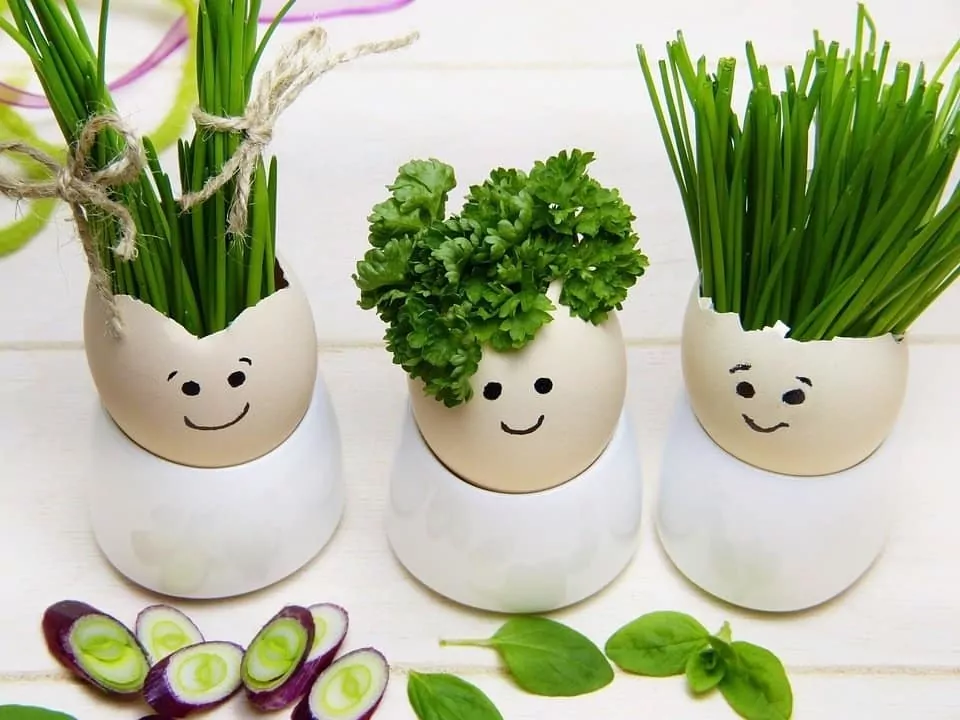Coming right up: Easter and Passover – springtime’s religious “twins.”
Why do these two important holy occasions come so close together?
It’s not hard to figure out when you remember that Jesus was a Jew, on his way to Jerusalem to celebrate his own holiday, which was then – and is still now – a date calculated by the lunar calendar. The Hebrew calendar, still in use today to set all religious dates for Jews, determines Passover; therefore, the moon also determines the date of Easter. In addition: Jesus’ Last Supper is believed to have been a Seder dinner!
Over all these many years, the two holidays still share important symbols from that long-ago time.
On Passover’s Seder tables there are always eggs, just as in Easter baskets – abiding signs of new life. Those baskets are lined with greenery, the fresh growth of spring, while we share the greenest of fresh parsley at every Seder. And the lamb roast that crowns so many Easter dinners recalls the sacrificial lamb whose blood – spread on the doorposts of Hebrew homes in the time of Moses — harks back to the Exodus from Egypt, the eternal Jewish symbol of salvation from slavery. So why else would Jesus so often be referred to as “the Lamb of God”?
The matzo, the unleavened bread eaten by Jews throughout Passover week, is also a throwback to that holy time of thankful celebration when the Jewish slaves, hurrying to follow Moses into the miraculous Red Sea crossing that followed, did not have time to let their bread dough rise.
Of course, Jesus did not live to see the end of the holiday in the fateful year that saw his death and resurrection, which started Christianity on its course. But Passover, like Easter, is still an annual symbol of continuity and new life for Jews as well. Many Orthodox Jews today have in their synagogues a special box to hold a piece of matzo, Passover’s unleavened bread, which is replaced each year with another piece from the most recent holiday commemoration.
And for Christians: all recall Jesus’ triumphant entry into Jerusalem, recognized and revered that day so long ago by onlookers who spread welcoming palms in his path – even though he appeared as a simple man, riding a humble donkey. Today, many churches gather palms right after Easter and save them for the next year, when they are burned and turned into forehead-markers for Ash Wednesday.
These relationships, past and present, all seem so clear if we just remember to look at the symbols of both holidays, their origins and their meanings.
These connections might well be repeated at every Seder and Easter dinner this year and in years to come, reminding both Christians and Jews of our common beginnings and abiding heritages. In our current time, fraught with so many conflicts of all kinds, both here at home and around the world, this would help us all to remember the history we share; and might help us all to be more understanding of those with whom – while celebrating the season in different ways – we still have so much in common.
Happy Holidays to All!
Harriet Gross
 A proud native of Pittsburgh, PA, Harriet P. Gross began her journalism career in 1955 at a local paper. She moved to Chicago 2 years later where she worked as a full-time journalist until moving to Dallas in 1980. Here,Harriet began freelancing, doing special projects such as the text for Dallas Section, National Council of Women’s soon-to-be-published history book in addition to writing for a variety of publications.
A proud native of Pittsburgh, PA, Harriet P. Gross began her journalism career in 1955 at a local paper. She moved to Chicago 2 years later where she worked as a full-time journalist until moving to Dallas in 1980. Here,Harriet began freelancing, doing special projects such as the text for Dallas Section, National Council of Women’s soon-to-be-published history book in addition to writing for a variety of publications.
Today, Harriet’s “In My Mind’s I” column runs weekly in the Texas Jewish Post. She has won writing awards from the Press Club of Dallas, American Jewish Press Association, National Federation of Press Women, Illinois Woman’s Press Association and Press Women of Texas, and has been listed in five Who’s Who publications. In her community, Harriet currently is a book reviewer, discussion leader, and program presenter for clubs, senior living facilities, and Jewish institutions including the JCC’s Senior Program.
originally posted 3/20/2019
updated 3/22/2022










